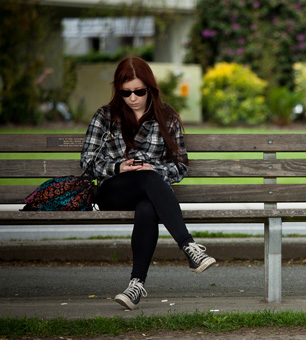Tags
Living Alone: The Rise of Capitalism and the Decline of Families.
Three books. Three eye-opening accounts of tectonic shifts in American life. And one extraordinary analysis of the intimate connections between the new economy, the political power structure and the historic rise of one-person households.
Tectonic shifts are changes in the very foundations of the earth. The books I review illustrate these shifts in the ways that Americans manage their personal lives: how we live day to day, with whom we live and what kinds of relationships we have.
Three recent widely-acclaimed books track changes in America’s personal life. They are “Going Solo,” (Eric Klinenberg, New York: The Penguin Press, 2012); “The Outsourced Self,” (Arlie Russell Hochschild, New York: Metropolitan Books, 2012); and “Coming Apart,” (Charles Murray, New York: Crown Forum-Random House, 2012).
None of the three describe the duet danced between the changes they astutely observe and the new US economy and political power structure. I will try to do that here.
Going Solo
“Going Solo” describes the meteoric rise of people choosing to live alone. Today – for the first time since the census began counting in 1880 – more than half of American adults are single. They are tied with childless couples for the distinction of being the most predominant residential type, more numerous than nuclear families with children, multigenerational families, roommate homes or group homes. Manhattan alone is home to a million people whom Klinenberg calls “singletons,” living alone in one-person dwellings. Manhattan is typical of US and European cities. The people living solo are not all old widows and widowers. For the first time in recorded US history, the majority of people that the census refers to as of “prime marriageable age” – 18 to 34 years old – are unmarried and live alone. For younger Americans this does not feel like a radical change. For older Americans it is a sea change.
Klinenberg is enthusiastic about this development. He mentions, but does not focus on, its wildly different outcomes for people who do and do not have money. For the affluent top 20 percent, living solo can be a refuge. For the employed professional, it can deliver respite from the constant demands of stressful work lives. It is now common knowledge that the 8-hour day is lost in America and folks need to escape from employers.
Cell phones and job precarity make workers available at all hours. Wealthy “singletons” can work until late at night and then go to bars or restaurants with their fellow workers and spend money and time decompressing before they return to the peace of their single dwellings. On weekends, when they have discretionary time, they can entertain themselves through their personal computers or with the thousands of opportunities a city can provide for those who can pay. Older, affluent solo dwellers who are either employed or retired can go to the theater or expensive films, dinners out, etc.
If they are at home, social media on their computers can keep them somewhat connected. In short, they can connect on their own schedules in ways that having money facilitates. If they are old and infirm and in the 10 percent to 20 percent of privileged Americans, they can hire caretakers who accompany them and make socializing and cultural events possible. They can stay more connected on their own terms.
Not so with the 80 percent of youth who also work – or try to work – long hours. They cannot afford to go out and spend money and often cannot afford computers. Younger people can find each other and hang out in less safe environments where the police may bother them for loitering. Elderly poor singletons are often stuck in isolating and dangerous single-room-occupancy hotels. They often live in poor and dangerous neighborhoods where they cannot feel safe enough to sit outside or go to a local park if there is one. They cannot afford computers or lessons in how to use them. Lines for computer access at the public library are long and library hours are cut. If seniors are in the 80 percent who cannot afford sufficient paid care, and do not have devoted local children, friends or relatives, they are isolated and often depressed. This is the poor neglected side of US single life, or death as the case may be. Read more


Reblogged this on THE SCARECROW.